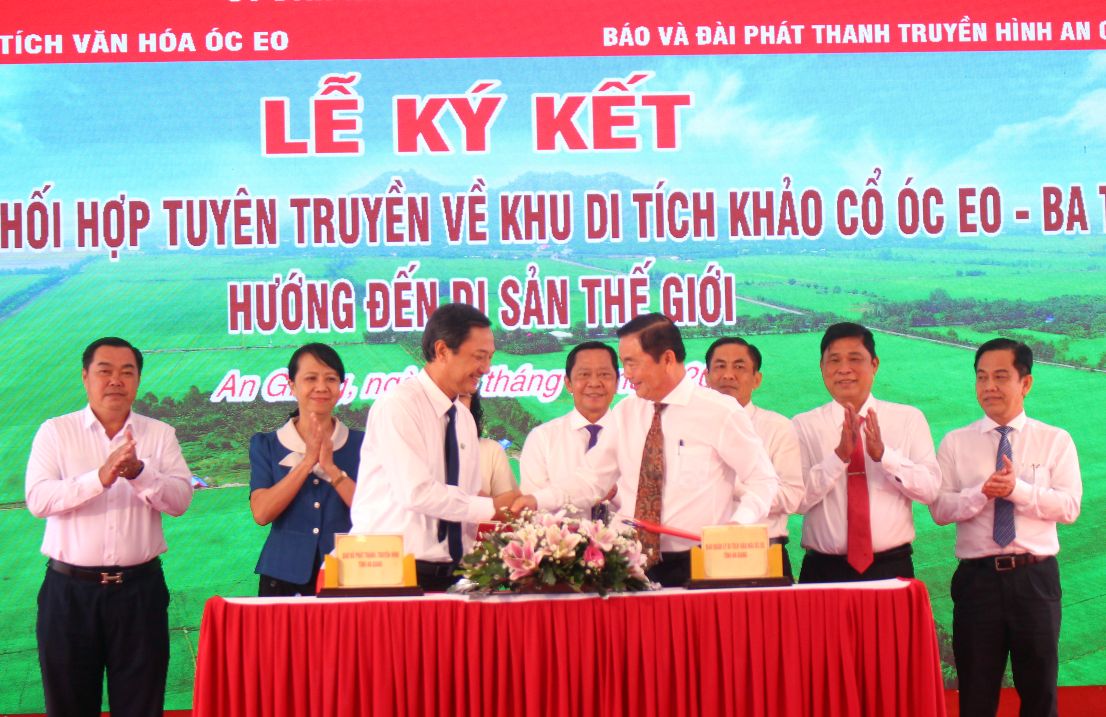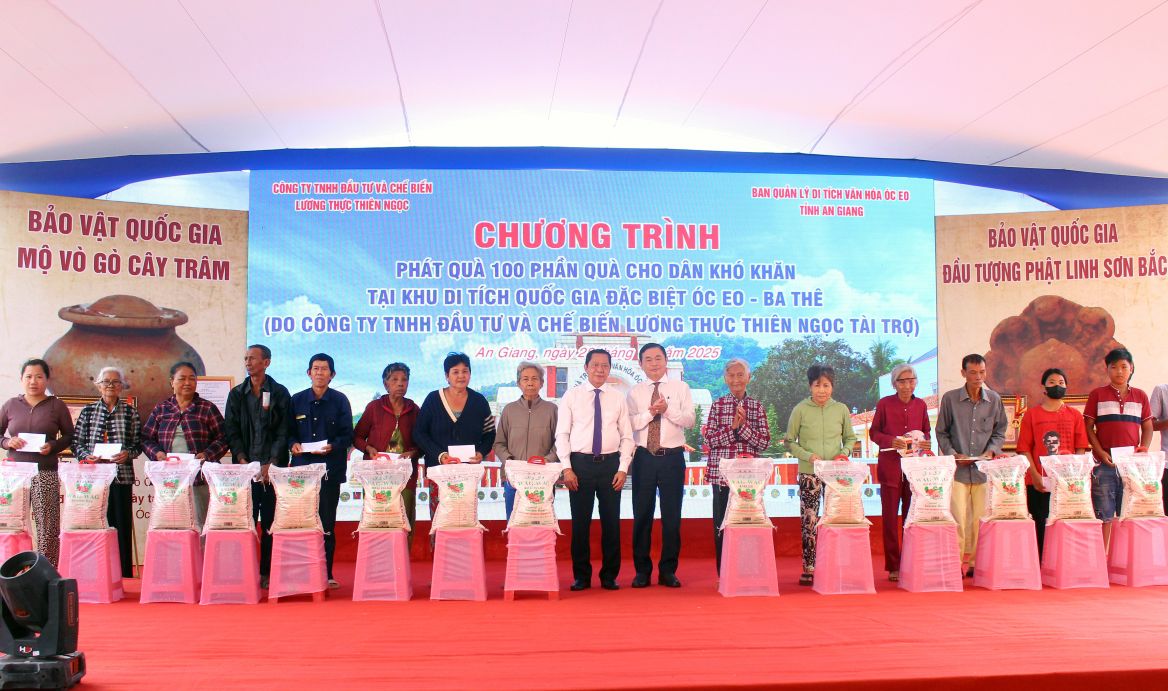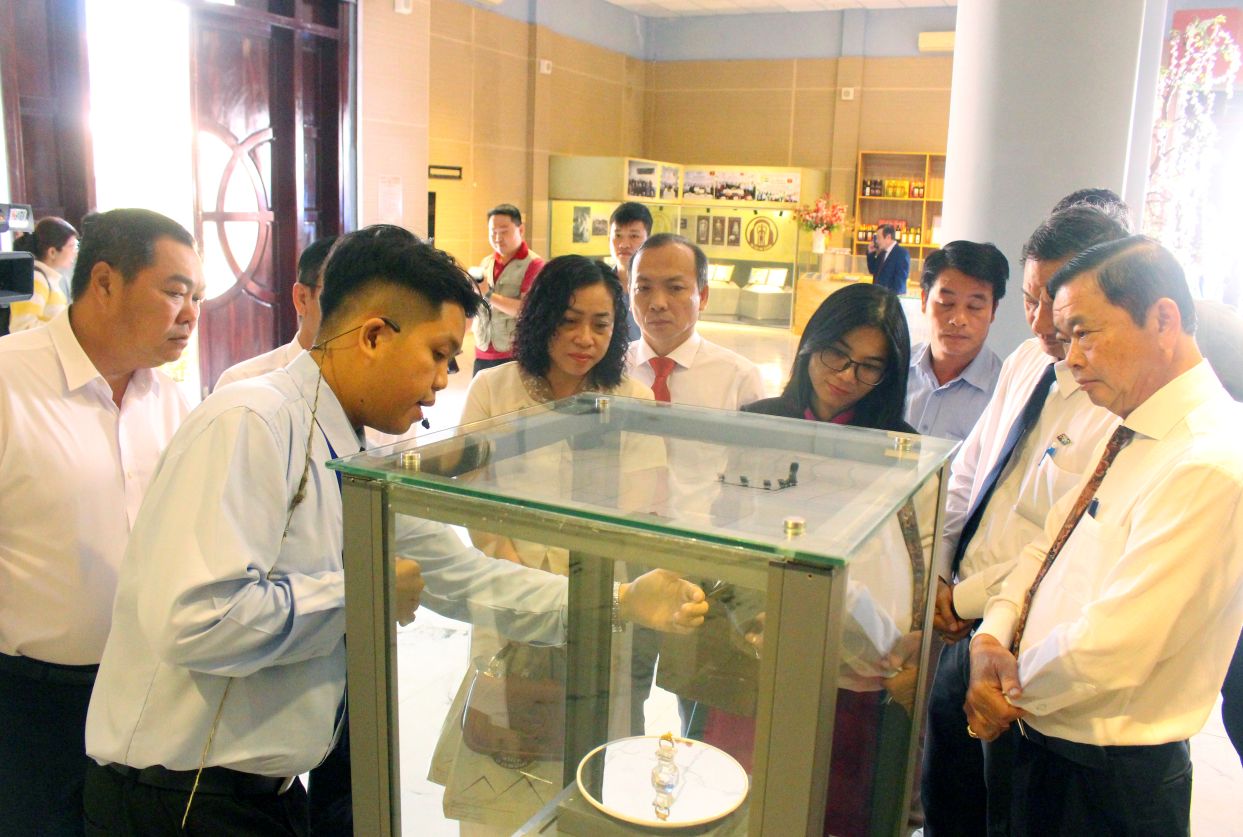On November 28, at the Management Board of Oc Eo Cultural Relic, An Giang province solemnly announced the Prime Minister's Decision to recognize National Treasures (13. in 2024).
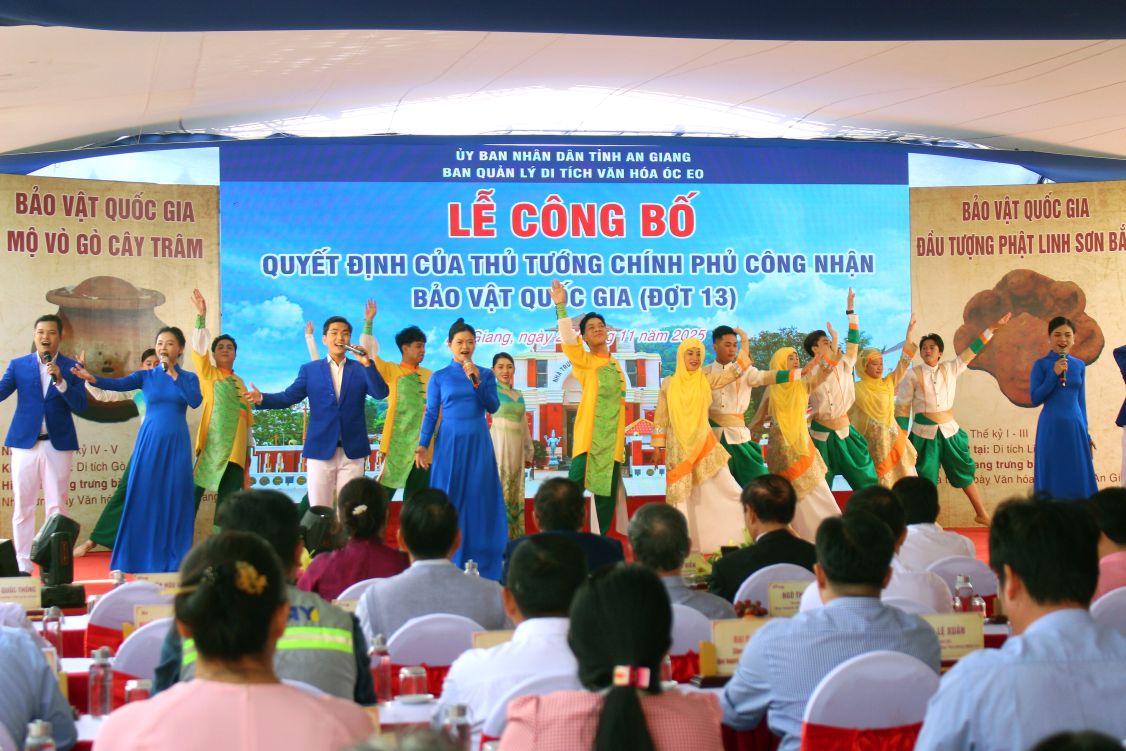
Reporting the results of the discovery and preparation of a dossier to propose the recognition of An Giang's national treasures (phase 13. in 2024), Mr. Nguyen Khac Nguyen - Deputy Director of the Management Board ofoc Eo Cultural Relics - general, Mo Go Cay Tram Mausoleum was discovered during a joint excavation between the Management Board ofoc Eo Cultural Relics, Ho Chi Minh City University of Social Sciences and Humanities, Daehan Cultural Heritage Research Institute and the Department of Humanities - Seoul National University (Korea) during the excavation conducted from December 26, 2018 - January 22, 2019.
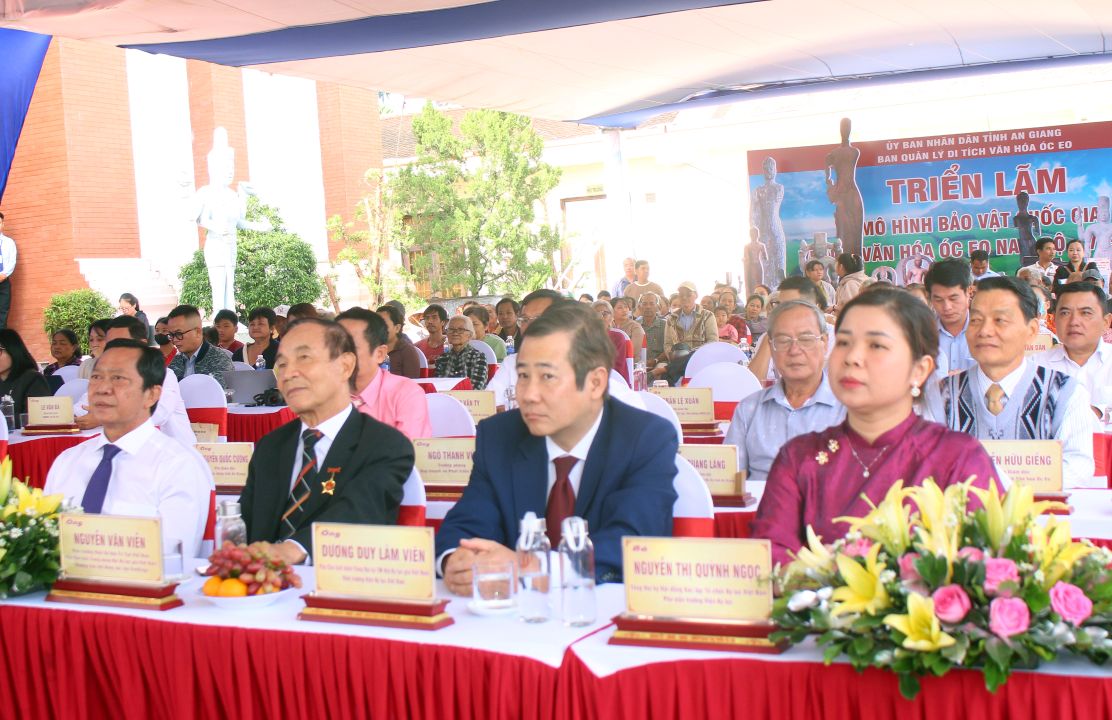
This is a form of a pottery coffin placed on the back in the center of the celestual heart, the clapper's mouth is covered with a disc-shaped lid, hook rings, and the heart is closed. Based on the characteristics of the material, shape and processing techniques, it is possible to determine that the ceramic vases and lids belonged to the early Oc Eo period (1st - 3rd centuries AD).
As for the statue of Dau Phat Linh Son Bac, discovered during the excavation at Linh Son Bac relic (Oc Eo - Ba The relic site) under the Project Research of the relic site of Oc Eo - Ba The, Nhe Chua (Oc Eo Southern Culture) period 20172020.
The statue found in the cultural layer has a rich accumulation of pottery, tiles, Indian-style oil lamps, worship statues, stele paintings, etc., associated with layers of religious architecture from the first half of the 19th to the 9th and 12th centuries.

The artifact is a carved Buddha head statue, depicting the image of Buddha with the 5-head Naga snake arch radiating behind it, forming a shield on the head - a typical symbol in Buddhist art influenced by India. Naga snake arch is shown with 5 ends, including 1 central end and two pairs of snake heads symmetrically on both sides, all facing the center.
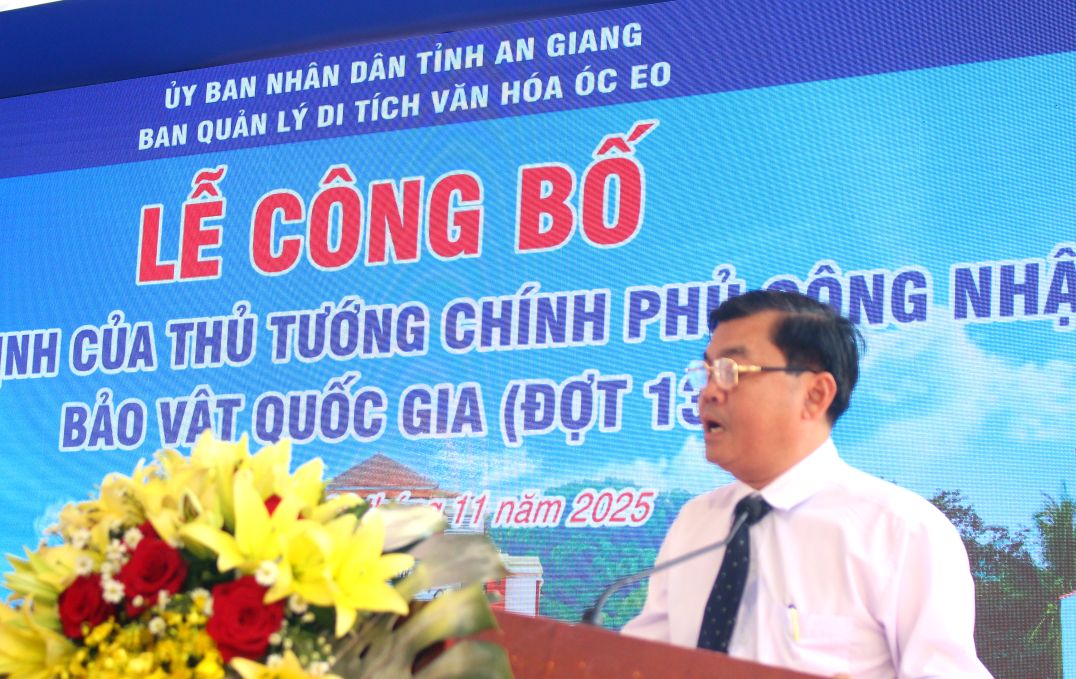
With those unique values, on December 31, 2024, on behalf of the Prime Minister, Deputy Prime Minister Le Thanh Long signed Decision No. 1712/QD-TTg to recognize the two artifacts as National Treasures.
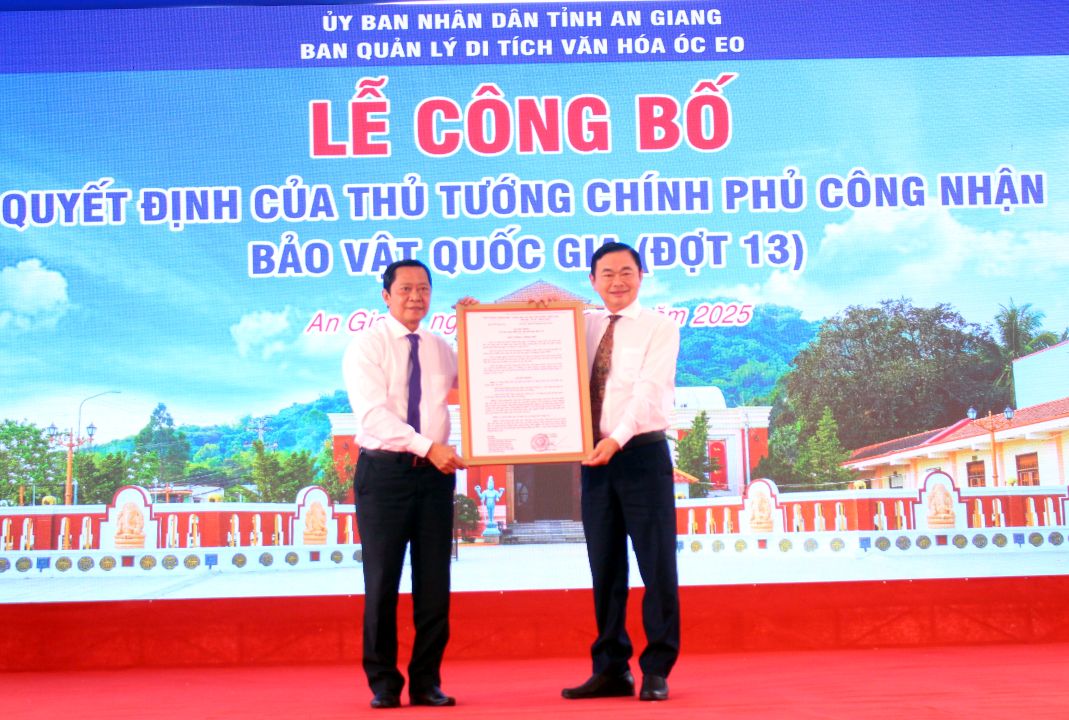
With this decision, the Management Board of Oc Eo Cultural Relic of An Giang province currently has 10 National Treasures. 8 artifacts were previously recognized as National Treasures, including: Linh Son Bac Buddha Sphinx, Khanh Binh Stone Buddha statue, Giong Xoai Wood Buddha statue, Brahma Giong Xoai statue, Linga-Yoni Monument, Linga - Yoni Linh Son Monument, Nhan Nandin Giong Cat Monument, Mukhalinga Ba The.
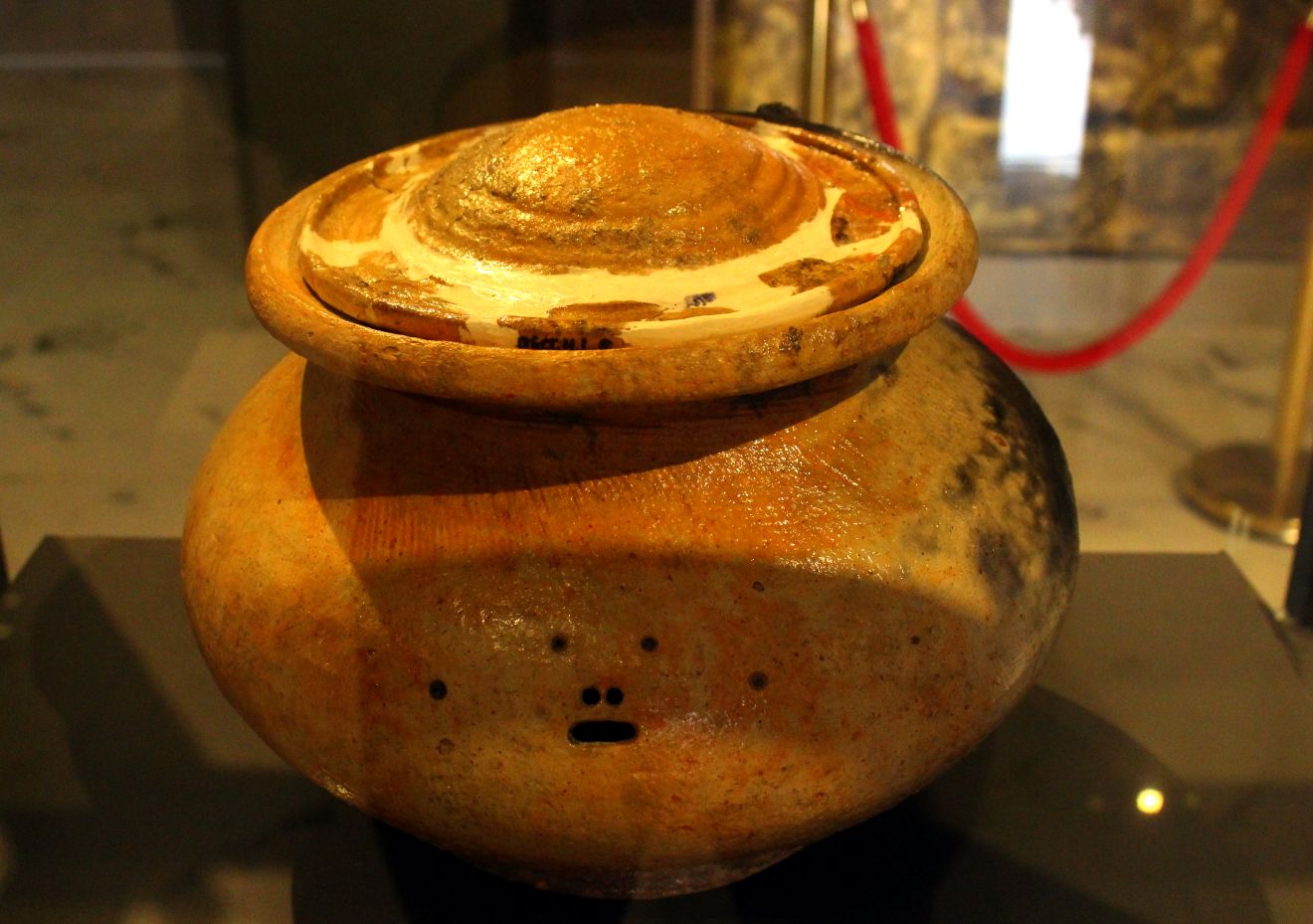
On this occasion, An Giang province also announced Decision No. 3306/KLVN/2025 dated April 3, 2025 of the Vietnam Record Institute on the establishment of 3 Vietnamese records in Oc Eo Culture, including: The unit that propagates, mobilizes and receives the most donations from the people ofoc Eo cultural artifacts with the largest quantity to serve the research, preservation and visitors and exhibition needs of the public;oc Eo Cultural Museum - The place to display and preserve Phu Nam currency ofoc Eo culture found through excavation and donated the most from the people and the unit that preserves and preserves 2 artifacts of the wooden tea tree, De-shaped tea tree ofoc Eo culture found through excavation in Vietnam.
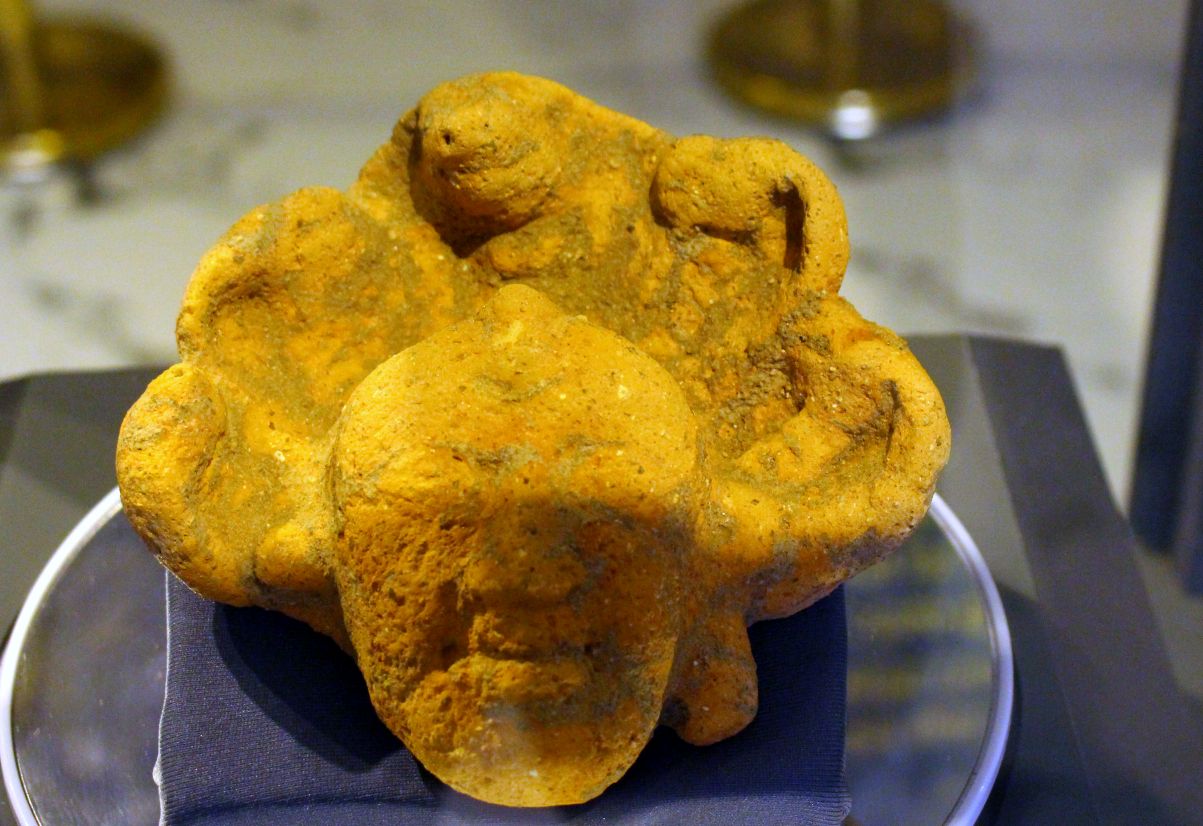

Speaking at the ceremony, Director of the Management Board of Oc Eo Cultural Relics Nguyen Van Nhien emphasized that the artifacts recognized as National Treasures today are not only the creative crystallization of ancient residents but also valuable relics affirming the position of Oc Eo culture in the history of the nation.
The Management Board is focusing all resources and domestic and foreign scientific agencies to actively complete the dossier towards the goal of being recognized by UNESCO as a World Cultural Heritage Site of Oc Eo Cultural Relic by 2027.
